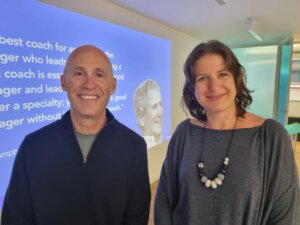Two weeks ago, I had laser eye surgery, which put an end to 35 years of wearing glasses. You might think that after 35 years I would have already gotten used to my eyeglasses and lived with them peacefully, but it wasn’t the case. Here is what really happened:
When I was 8 years old, the doctor said I needed eyeglasses. I reacted in the only way possible and immediately started crying. Since then, I haven’t been crying about it, but I never stopped hating wearing glasses. As soon as I could, I started wearing contact lenses and have been wearing them non-stop for 25 years.
I knew about the idea of laser eye surgery for a long time but was always too afraid to even think about it. After all, I only have one pair of eyes, and other than not seeing too well they were healthy and I wanted to keep them that way. Four years ago though, my husband started thinking about surgery, and I decided to consider it too. I went to two of the top clinics in my area. Each one ran a series of tests over a few hours, and told me I’m a good fit for the surgery. I contemplated it for a while and even upgraded my medical insurance to qualify for a discount, but, eventually, I didn’t do it then.
Another four years needed to go by until I decided to take action. But how come? I always hated my glasses, so why wait any longer? There are a number of reasons, all summing up to the fact that I simply wasn’t ready to make that decision back then.
It was a major decision to make. It’s an expensive surgery, but that wasn’t the primary reason holding me back. I was still afraid. But I can tell you that I was still afraid this time too. So fear took over in the previous time, and it didn’t this time. Why? Because the value I saw in it this time was much bigger than the value I saw four years ago. In the last couple of years, I needed to reduce the use of contact lenses gradually, until eventually, I could hardly wear them. In fact, in the last year or so I only wore my contact lenses for the opening and graduation workshops of each batch of the CPO Bootcamp, because I knew I would be taking photos and wanted to look nice 🙂 But as soon as I came home I needed to remove them ASAP since my eyes were so dry that they were burning.
I ended up wearing eyeglasses all the time. Being a grown, self-aware woman, I told myself that I needed to accept this and went to buy a truly nice pair of glasses. As beautiful as they were, I still didn’t like seeing myself with them. And as time went by, my eyesight deteriorated and I came close to needing reading glasses as well. That’s when I decided to reconsider the whole surgery idea again. The impact of heaving to wear glasses became heavier and heavier, enough for me to consider this terrifying procedure where a laser cuts your eyes.
There was nothing that the clinics could have done to convince me to make the decision sooner. I needed to come to it myself, at my own pace. So how is this related to you? If there was nothing they could have done, what can take away from this heart-wrenching story?
As a product leader, you must define not only the problem you are solving but also for whom. Understanding which customer profile is ideal for you is super important in your ability to create a successful product. When you consider the ideal customer profile, you need to get yourself into your customers’ world and deeply understand what they need to go through before they are ready to buy your product. Selling to prospects who aren’t there (yet) would be a waste of time and would only create frustration on both sides.
In my work with companies on creating the product strategy, there are often pitfalls that are easy to overlook in figuring out if the problem you are solving is a good one to solve. Here are the most common pitfalls when it comes to understanding your potential customers.
They Have Good Alternatives
In my case four years ago, the fact that I hated my glasses didn’t disturb me that much, since most of the time I wasn’t wearing glasses, I was wearing contacts instead. Unlike other people who felt some inconvenience with contact lenses, mine worked perfectly. It truly didn’t bother me to wear them all day long. So the original problem that the surgery came to solve wasn’t painful enough, simply because I had other good alternatives.
When you consider the alternatives to your product, it’s important to understand what your potential customers actually use to solve the same problem, not what direct competition you face. In my case, it wasn’t about which clinic to go to (AKA direct competition) but about the necessity of any clinic or surgery at all.
Here is another example back from my days at eBay: as you probably know, eBay started by creating a marketplace for C2C (consumer to consumer) selling. An online platform for garage sales, if you will. So when you think about the competition for that section of the business, it’s easy to think about direct alternatives like craigslist. When you phrase the problem as I did above, it’s already reasonable to think about the original offline alternative of a yard sale. But honestly, the largest competitor of C2C selling 10 years ago (and perhaps today as well but in a different form) was Facebook. Today they have a dedicated platform for it, but back in the days, if you wanted to sell your car, you simply posted on Facebook and let it run between your friends and their friends until the car was sold. You didn’t need a dedicated platform that would let you pick the make, model, and year and let buyers sort by price. It simply worked.
Your action item for this pitfall is twofold: first, think about the real competition you are facing – the ways your customers are solving this problem today. Thinking from that point of view allows interesting alternatives to show up, like doing nothing, or doing it themselves which is a common alternative if you are selling to developers, for example. Once you identified the real competition think again if the problem is as severe with these alternatives in use. If it’s not good enough and you still feel that the problem exists, you might need to define it slightly differently, since “not seeing well” (the problem that causes you to wear glasses) is not the same as “feeling prettier without glasses” (the problem that would cause you to wear contacts) and that, in turn, is not the same as “it’s too much hustle and doesn’t really work and it’s only going to get worse over time” – which is the problem that eventually got me to choose the surgery option.
They Need to Try Simpler Things First
In the mentoring business that I’m at, almost no one comes to seek a mentor on their first day of the job. They take an opportunity to grow in their career, say as the CPO of a startup or as a Director in a larger company. They typically know that they would need to learn on the job since they know they haven’t done this before. But both them and their managers think they can do it or otherwise, they wouldn’t have gotten this job. So learning happens in simpler means than mentoring: they read, listen to podcasts, go to webinars and meetups when possible, and most importantly imply a growth mindset that helps them improve and learn the job as they do it. It’s only after they were dealing with it on their own for a while that they come to understand that they need stronger support. In some cases, they need to change roles again to truly feel the gap that I’m here to solve since in their previous role the setting was such that it wasn’t as painful.
Other examples include spreadsheets which are a simpler solution to almost any organizational software (CRM, marketing management, accounting, and even knowledge management in some cases), and usually would be the first choice of any organization before they consider a dedicated product. Monday’s first successful campaign was geared towards organizations that have outgrown Trello as their project management tool.
What this means is that when you define your ideal customer profile, you should think about the steps that they would need to go through before they are ready for your product. For example, a small startup company might be fine with homegrown solutions for a variety of problems, but when they become larger – 50 people or so – the problem is now much more severe.
There Are Hidden Costs That You Missed
This brings me to the last pitfall here: the problem should be severe enough not only to be worth the money you are asking for your product but also to overcome any other barriers in using it. These might be related to hidden costs like the time it would take them to migrate the data or teach everyone how to use a new system, or even less quantifiable barriers like the fear that something would go wrong in laser surgery in my case.
Any objection your customers have in the consideration process of your product is relevant here. Note that they wouldn’t always be expressing them explicitly and it’s your job as a product leader to get into their heads and understand what’s truly preventing them from moving on, even if they said something completely different.
Of course, everything I talked about would eventually impact also the features in your product (because a product for a young startup has different requirements than a product for a larger enterprise), but that’s not the main reason to do it. Your job as a product leader is not only to build a product that your customers love and would answer their needs, it is to build a product that would be successful in terms of the business, and to do that you must fully understand what your customers need to go through before they buy your product. Make yourself an expert in this area as well.










